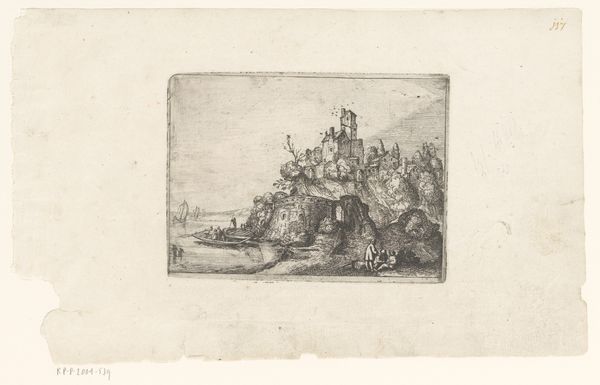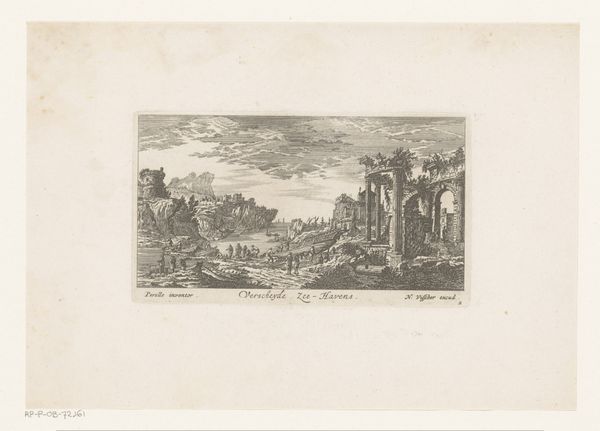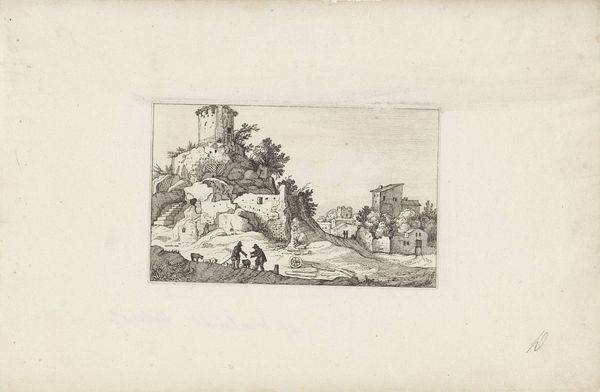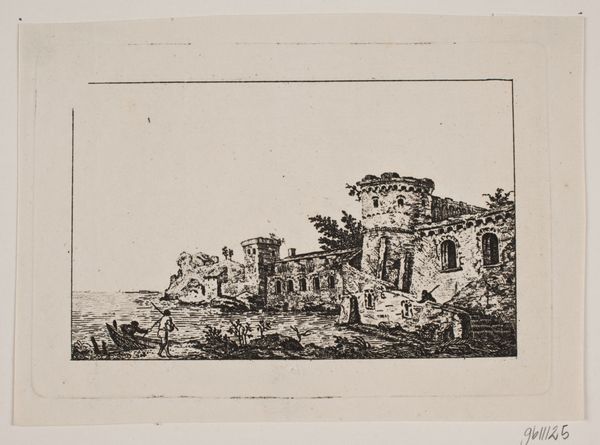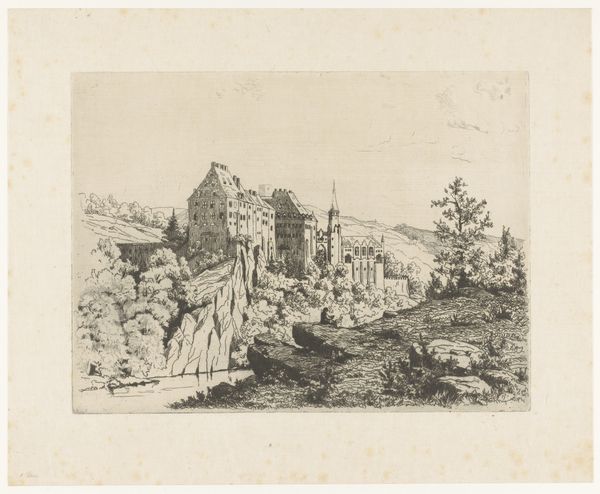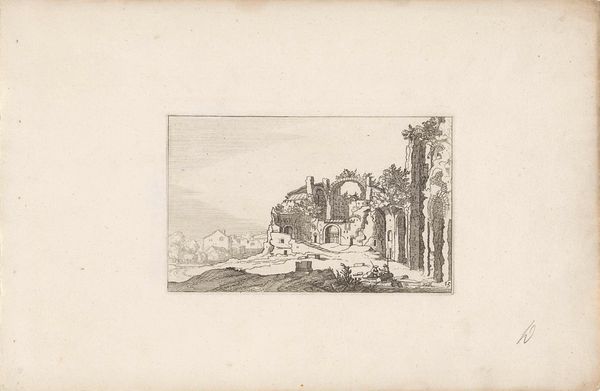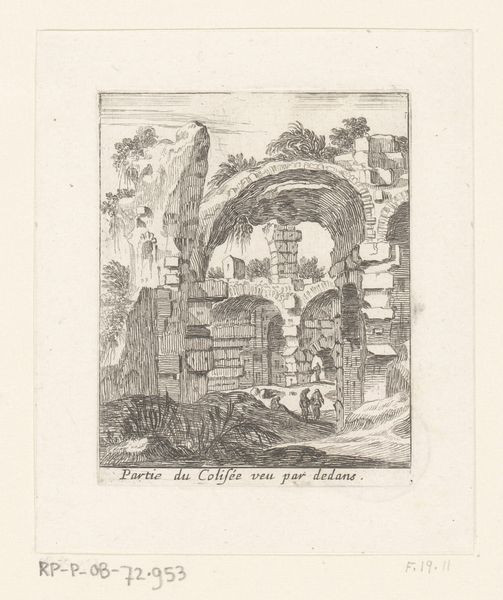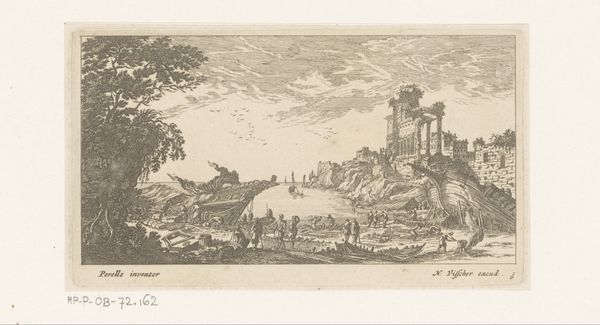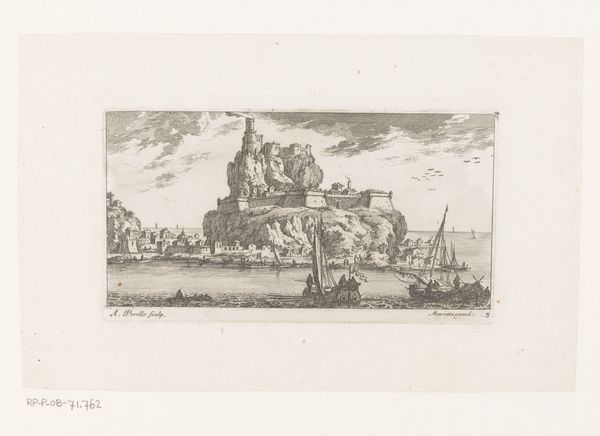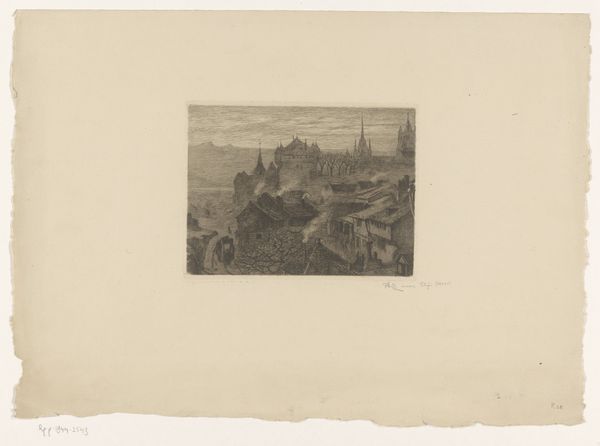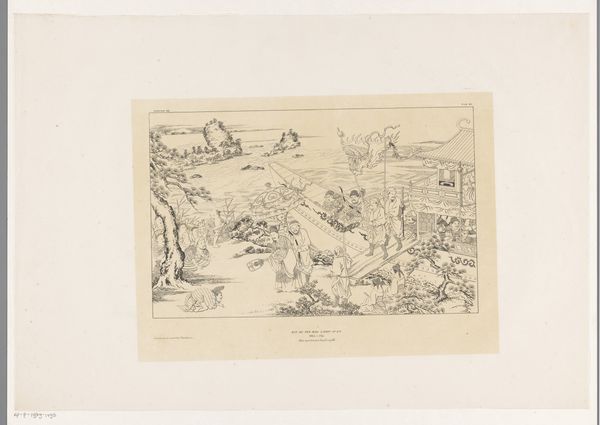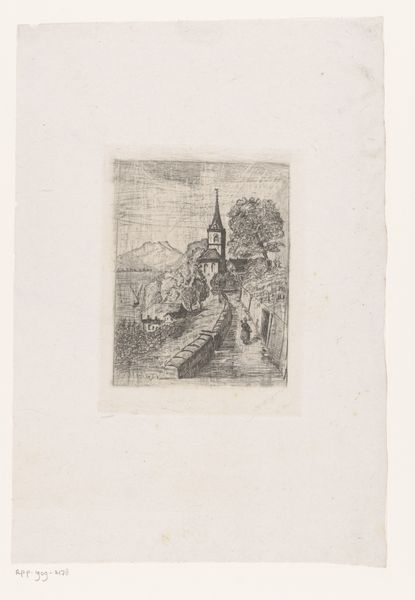
Fotoreproductie van een gravure van Sint Antonius door Albrecht Dürer c. 1910 - 1940
0:00
0:00
anonymous
Rijksmuseum
lithograph, print, etching, engraving
#
medieval
#
lithograph
# print
#
etching
#
landscape
#
figuration
#
northern-renaissance
#
engraving
Dimensions: height 98 mm, width 142 mm, height 151 mm, width 192 mm
Copyright: Rijks Museum: Open Domain
Curator: Let's consider this photogravure reproduction of Albrecht Dürer's engraving, "Saint Anthony," created sometime between 1910 and 1940. The print captures a figure in quiet contemplation against a backdrop of an imposing fortified city. What are your initial thoughts? Editor: It's fascinating to see this reproduced, almost like a study piece. I am really taken by the contrast between the seemingly delicate lines of the engraving and the weighty presence of the fortress looming behind the figure. The fineness of detail reminds me a bit of craftwork. How does this piece fit into Dürer's body of work, given his use of engraving? Curator: That's an interesting observation, and it brings up an important question about production. Dürer's skill as an engraver positioned him uniquely to disseminate images widely during the early print culture boom. How do you see the labor involved in creating such a detailed engraving affecting its reception? Think about the role of the engraver as artisan versus "artist." Editor: So, in a sense, his engravings weren't just artworks but commodities, reproducible for wider distribution? Curator: Exactly. Consider the copper plate: the physical object that bears the incised image, which can then be mechanically reproduced many times. This raises interesting questions about authorship, originality, and artistic labor. How might the photogravure medium, in this reproduction, alter the reading of those concepts today? Editor: It is such an intermixing of artforms and periods through labor! Almost an historical archeology! Perhaps this photogravure challenges our assumptions about authenticity. Now I see it pointing us not only to its origin in labor, but forward to mechanical reproduction today! Curator: Precisely. It invites us to think critically about value in art. What is valued more: the original, the reproduction, or the ideas circulated? Editor: Thanks! Seeing how its materiality affects our perception of the image is key. I am now appreciating that this reproduction highlights shifts in production over time.
Comments
No comments
Be the first to comment and join the conversation on the ultimate creative platform.
